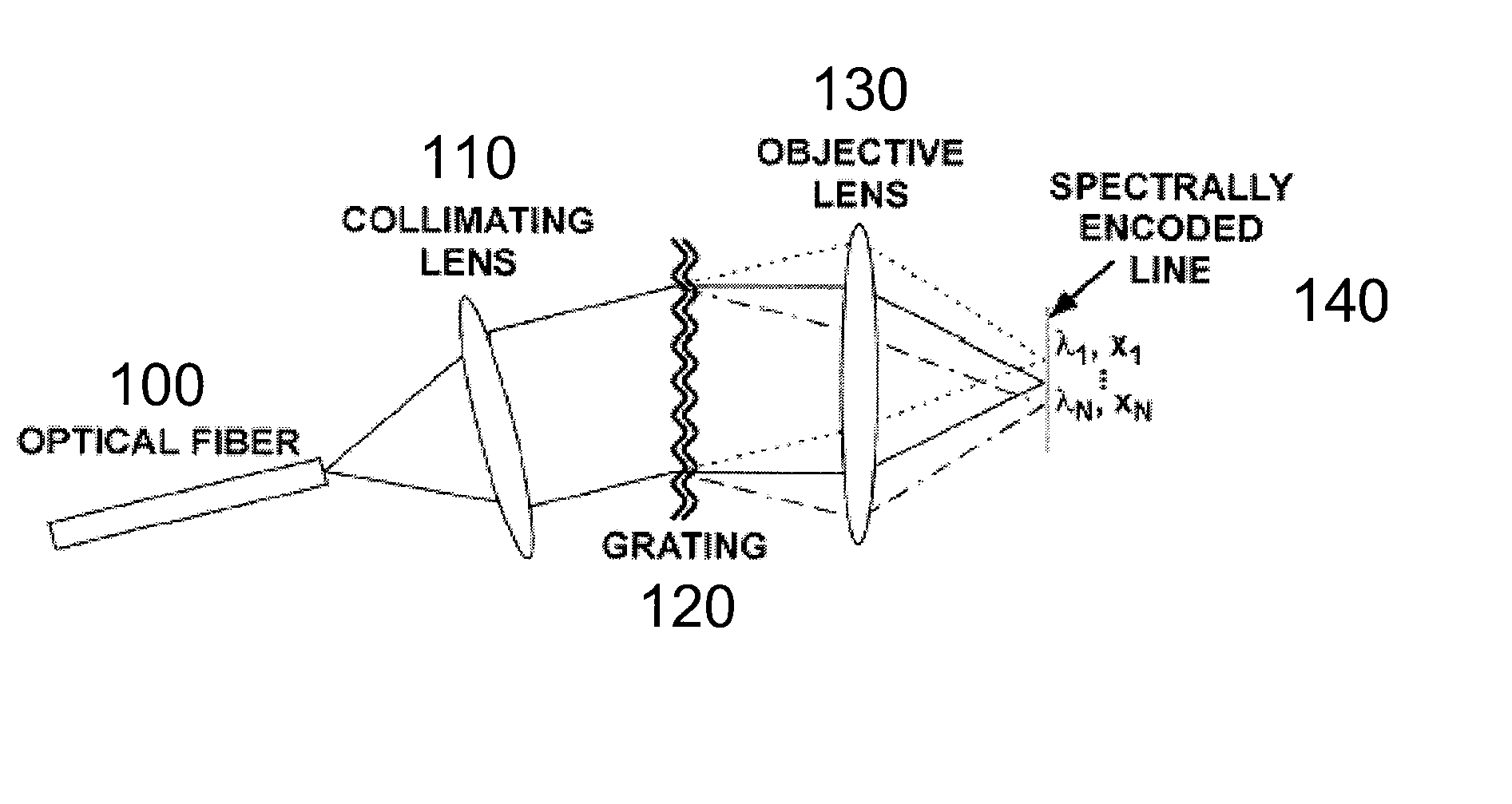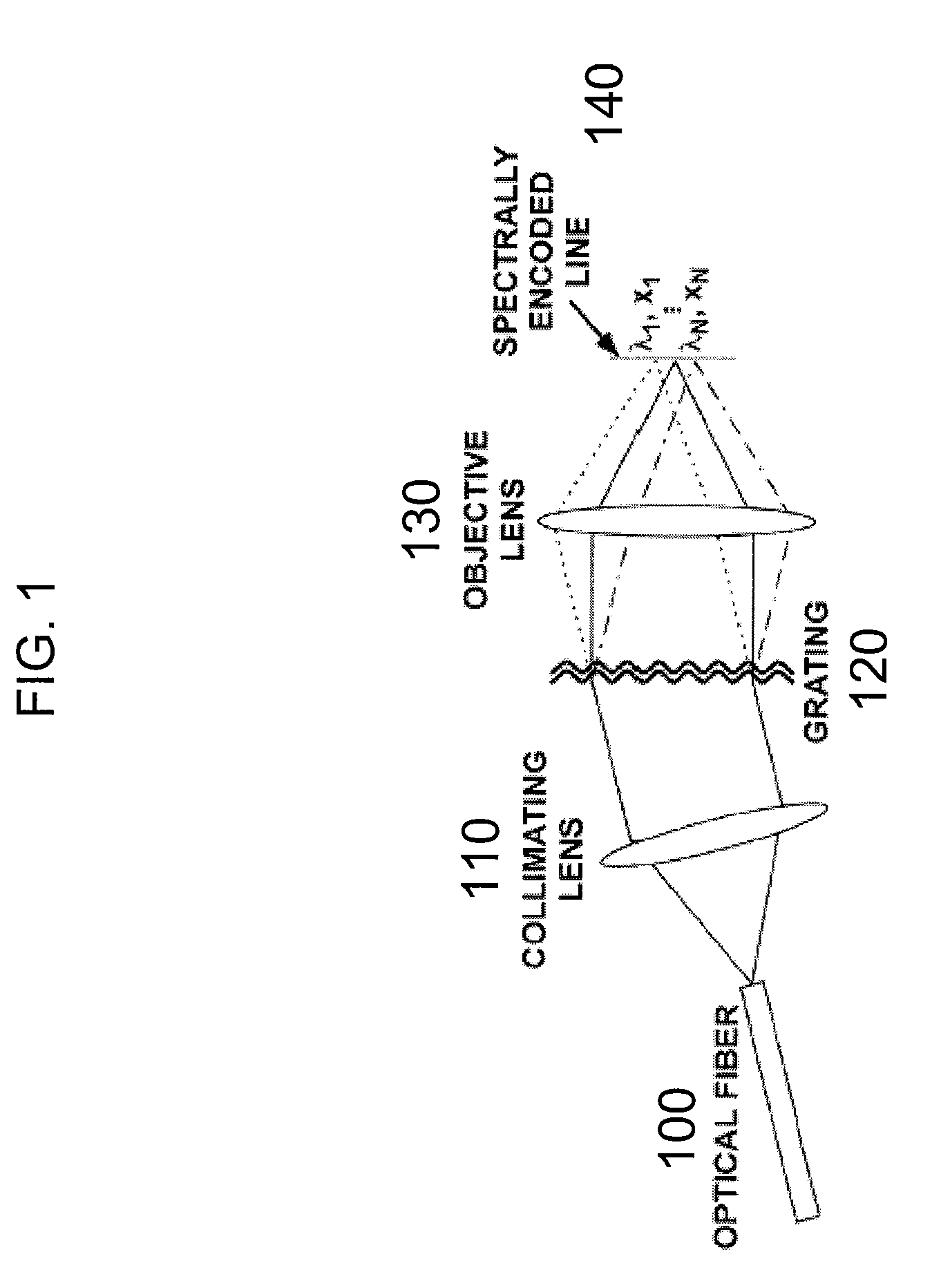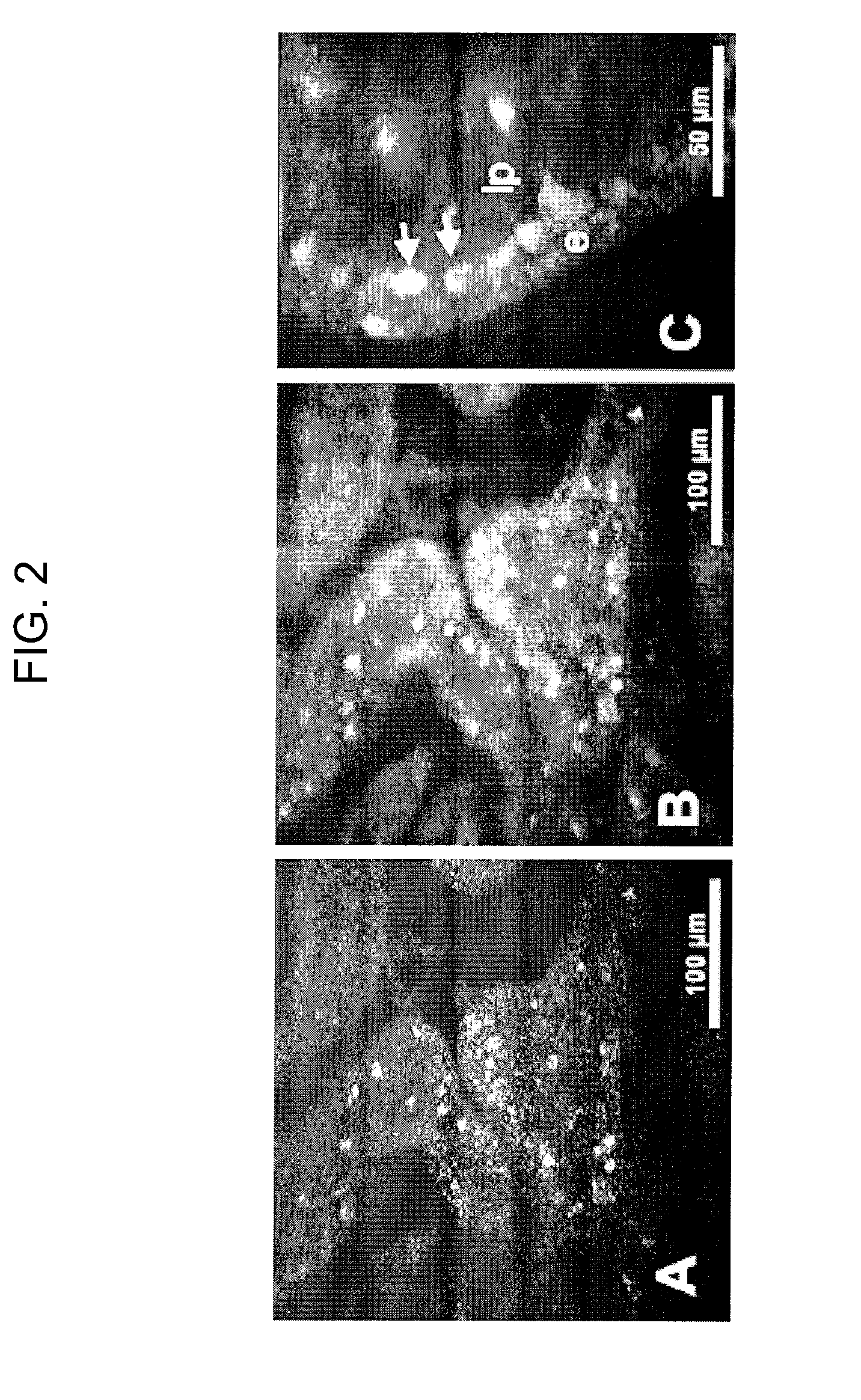Method and apparatus for method for viewing and analyzing of one or more biological samples with progressively increasing resolutions
a biological sample and resolution technology, applied in the field of viewing and analyzing one or more biological samples with progressively increasing resolution, can solve the problems of limiting the options for screening for pre-neoplastic conditions, significant challenges in identification and diagnosis, and removal of tissue from patients
- Summary
- Abstract
- Description
- Claims
- Application Information
AI Technical Summary
Benefits of technology
Problems solved by technology
Method used
Image
Examples
Embodiment Construction
[0043] In accordance with exemplary embodiments of the present invention, methods and arrangement according to exemplary embodiments of the present invention can be provided for viewing and analyzing of one or more biological samples and anatomic structures with progressively increasing resolutions. Such exemplary methods and arrangements can be used along with a visual inspection of the data or by automatic processing procedures of the data to guide the visualization of areas that are most likely to contain abnormal and / or unhealthy tissue.
[0044] An exemplary SECM technique is shown in FIG. 1. The output from a single-mode optical fiber 100, which may be located at a distal end of a probe, can be collimated by a collimating lens 110, and then illuminate a dispersive optical element (such as, e.g., a transmission diffraction grating 120). An objective lens 130 can then focus each diffracted wavelength to a distinct spatial location within the specimen, resulting in a transverse lin...
PUM
 Login to View More
Login to View More Abstract
Description
Claims
Application Information
 Login to View More
Login to View More - R&D
- Intellectual Property
- Life Sciences
- Materials
- Tech Scout
- Unparalleled Data Quality
- Higher Quality Content
- 60% Fewer Hallucinations
Browse by: Latest US Patents, China's latest patents, Technical Efficacy Thesaurus, Application Domain, Technology Topic, Popular Technical Reports.
© 2025 PatSnap. All rights reserved.Legal|Privacy policy|Modern Slavery Act Transparency Statement|Sitemap|About US| Contact US: help@patsnap.com



